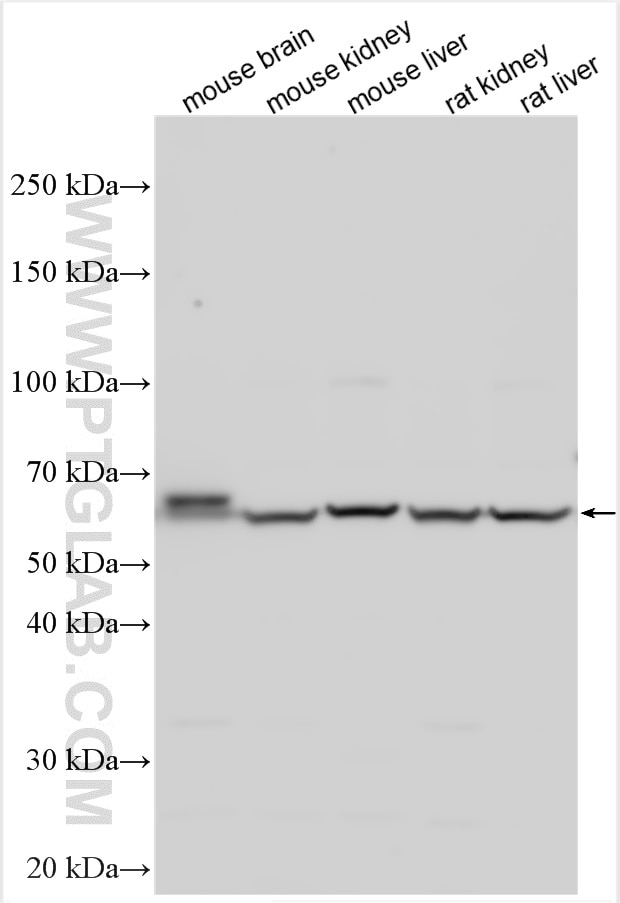Tested Applications
| Positive WB detected in | mouse brain tissue, mouse kidney tissue, mouse liver tissue, rat kidney tissue, rat liver tissue |
Recommended dilution
| Application | Dilution |
|---|---|
| Western Blot (WB) | WB : 1:1000-1:4000 |
| It is recommended that this reagent should be titrated in each testing system to obtain optimal results. | |
| Sample-dependent, Check data in validation data gallery. | |
Published Applications
| WB | See 1 publications below |
Product Information
16844-1-AP targets OAT3/SLC22A8 in WB, ELISA applications and shows reactivity with human, mouse, rat samples.
| Tested Reactivity | human, mouse, rat |
| Cited Reactivity | rat |
| Host / Isotype | Rabbit / IgG |
| Class | Polyclonal |
| Type | Antibody |
| Immunogen | OAT3/SLC22A8 fusion protein Ag9795 Predict reactive species |
| Full Name | solute carrier family 22 (organic anion transporter), member 8 |
| Calculated Molecular Weight | 542 aa, 60 kDa |
| Observed Molecular Weight | 60 kDa |
| GenBank Accession Number | bc022387 |
| Gene Symbol | SLC22A8 |
| Gene ID (NCBI) | 9376 |
| RRID | AB_3663018 |
| Conjugate | Unconjugated |
| Form | Liquid |
| Purification Method | Antigen affinity purification |
| UNIPROT ID | Q8TCC7 |
| Storage Buffer | PBS with 0.02% sodium azide and 50% glycerol pH 7.3. |
| Storage Conditions | Store at -20°C. Stable for one year after shipment. Aliquoting is unnecessary for -20oC storage. 20ul sizes contain 0.1% BSA. |
Background Information
OAT3 (encoded by SLC22A8) is widely distributed in the kidney, liver, choroid plexus, olfactory mucosa, brain, retina, and placenta, but it is pre-dominantly expressed on the basolateral membrane of renal tubular cells. OAT3 plays a crucial role in the uptake, distribution, and excretion of various endogenous/exogenous substances.
Protocols
| Product Specific Protocols | |
|---|---|
| WB protocol for OAT3/SLC22A8 antibody 16844-1-AP | Download protocol |
| Standard Protocols | |
|---|---|
| Click here to view our Standard Protocols |
Publications
| Species | Application | Title |
|---|---|---|
Naunyn Schmiedebergs Arch Pharmacol Molecular mechanism of geniposide against ANIT-induced intrahepatic cholestasis by integrative analysis of transcriptomics and metabolomics |



